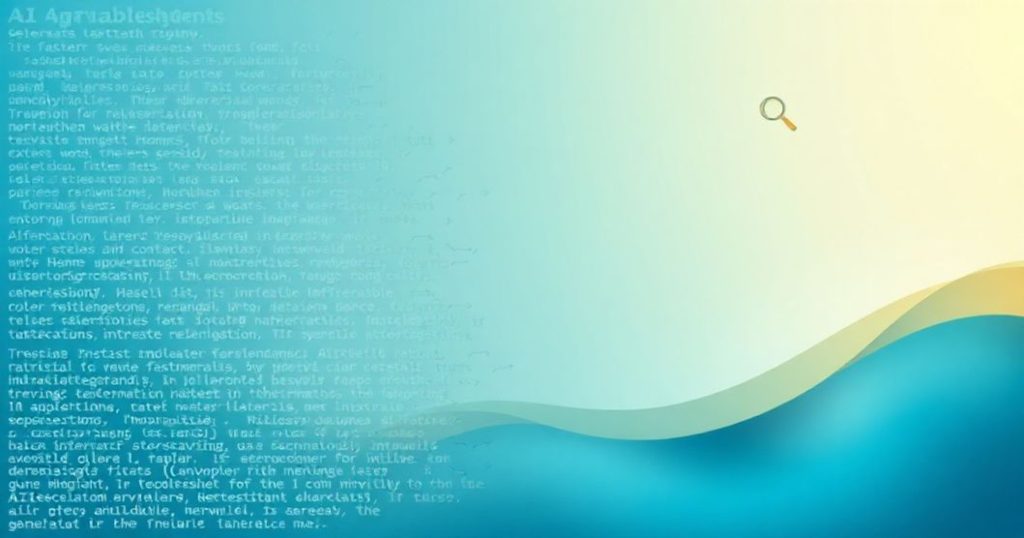Troubleshooting AI-Generated Text Overlay: A Comprehensive Guide
Have you ever generated an image using an AI tool, only to find that the text overlay is misaligned, blurry, or just plain wrong? You’re not alone. AI-generated text overlay issues are a common frustration for many creators. In this article, we’ll delve into the world of AI image generation and provide you with the knowledge and skills to troubleshoot and resolve text overlay problems.
The first step in troubleshooting AI-generated text overlay issues is to understand how these tools work. AI image generators use complex algorithms to analyze text prompts and generate images. However, these algorithms can sometimes struggle with text overlay, resulting in subpar results. To overcome this, it’s essential to use high-quality prompts that provide clear instructions for the AI. For instance, instead of using a vague prompt like ‘generate an image of a cat,’ you could use a more specific prompt like ‘generate an image of a fluffy white cat with bright blue eyes, sitting on a Victorian-style velvet cushion, with soft natural lighting and a professional photography style.’ This level of detail helps the AI understand your vision and produce a better result.
In addition to using high-quality prompts, another crucial factor in achieving perfect text overlay is the choice of AI model. Different models have different strengths and weaknesses, and some are better suited for text overlay tasks than others. For example, models like DALL-E 3 and Midjourney v6 are known for their exceptional text-to-image capabilities, while others like Stable Diffusion XL excel at generating more abstract and artistic images. By selecting the right model for your specific needs, you can significantly improve the quality of your text overlay.
Understanding AI Image Generation
AI image generation is a rapidly evolving field, with new models and techniques being developed all the time. To get the most out of these tools, it’s essential to understand the basics of how they work. AI image generators use a combination of natural language processing (NLP) and computer vision to analyze text prompts and generate images. The NLP component helps the AI understand the meaning and context of the prompt, while the computer vision component enables it to generate the actual image. By leveraging these technologies, AI image generators can produce stunning visuals that were previously unimaginable.
One of the key benefits of AI image generation is its ability to democratize visual content creation. With AI tools, anyone can create professional-quality images, regardless of their design experience or technical skills. This has opened up new opportunities for content creators, marketers, and small business owners, who can now produce high-quality visuals without breaking the bank. Moreover, AI image generators can also be used to automate repetitive design tasks, freeing up more time for creative and strategic work.
Troubleshooting Common Text Overlay Issues
Despite the many advances in AI image generation, text overlay issues remain a common problem. Fortunately, most of these issues can be resolved with a few simple tweaks to your prompt or model selection. Here are some common text overlay issues and how to fix them:
- Blurry text: This is often caused by using a model that is not optimized for text overlay. Try switching to a model like DALL-E 3 or Midjourney v6, which are known for their sharp text capabilities.
- Misaligned text: This can be caused by using a prompt that is too vague or open-ended. Try using a more specific prompt that includes details about the text alignment and positioning.
- Incorrect font or style: This can be caused by not specifying the font or style in your prompt. Try adding more detail to your prompt, such as ‘generate an image of a cat with the text “Hello World” in Arial font, size 24, and bold.’
By following these tips and troubleshooting common text overlay issues, you can significantly improve the quality of your AI-generated images. Remember to always use high-quality prompts, select the right model for your needs, and experiment with different techniques to achieve the best results.
Best Practices for AI Image Generation
While AI image generation is a powerful tool, it’s not a replacement for human creativity and judgment. To get the most out of these tools, it’s essential to follow best practices and use them in conjunction with your own creative vision. Here are some tips for using AI image generators effectively:
First, always start with a clear and well-defined prompt. This will help the AI understand your vision and produce a better result. Second, experiment with different models and techniques to find what works best for your specific needs. Third, don’t be afraid to edit and refine your results – AI image generators are not perfect, and some manual tweaking may be necessary to achieve the desired outcome.
Finally, remember that AI image generation is a rapidly evolving field, and new models and techniques are being developed all the time. To stay ahead of the curve, it’s essential to stay up-to-date with the latest developments and advancements in the field. This can involve following industry leaders and researchers, attending conferences and workshops, and participating in online communities and forums.
Conclusion
In conclusion, troubleshooting AI-generated text overlay issues requires a combination of technical knowledge, creative vision, and experimentation. By understanding how AI image generators work, using high-quality prompts, selecting the right model for your needs, and following best practices, you can significantly improve the quality of your AI-generated images. Whether you’re a content creator, marketer, or small business owner, AI image generators can help you produce stunning visuals that engage and inspire your audience. So why not give it a try? With the right tools and techniques, you can unlock the full potential of AI image generation and take your visual content to the next level.
Ready to get started? Try Icebox AI, a free and powerful AI image generator that can help you create stunning visuals in minutes. With its intuitive interface and advanced features, you can easily generate high-quality images that meet your specific needs. Whether you’re looking to create social media graphics, blog post illustrations, or product designs, Icebox AI has got you covered. So why wait? Sign up for free today and discover the power of AI image generation for yourself.
Frequently Asked Questions
Q: What is AI image generation?
A: AI image generation is a technology that uses artificial intelligence to generate images from text prompts. It’s a rapidly evolving field that has many potential applications, from content creation to product design.
Q: How do I troubleshoot common text overlay issues?
A: To troubleshoot common text overlay issues, try using a more specific prompt, selecting a different model, or experimenting with different techniques. You can also try editing and refining your results manually to achieve the desired outcome.
Q: What are the best practices for using AI image generators?
A: The best practices for using AI image generators include starting with a clear and well-defined prompt, experimenting with different models and techniques, and editing and refining your results manually. It’s also essential to stay up-to-date with the latest developments and advancements in the field.



